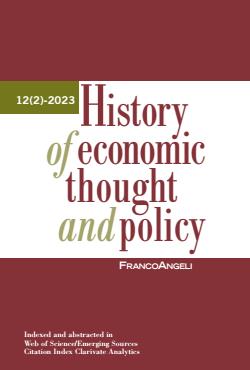
LIBRI DI MICHELANGELO VASTA


A caccia di informazioni accurate sui «fantasmi». Una proposta per l’analisi del fabbisogno professionale e formativo - In the debate on unemployment in European countries virtually all observers and policy makers agree on the utility of active labour policies, even if a clear proof of their effectiveness is still missing. This general agreement concerns also vocational training schemes, and the idea that these should be realized as a response to the «training needs» of firms. Many public and private organizations have tried to seek better information on this «ghost entity» during the last decade. These efforts have been relatively unsuccessful, mainly because of the limits of the survey schemes currently employed in this field. In this work we present a scheme which has been employed in numerous surveys with the aim to overcome many of those limits. It is based on the idea that, in order to get affordable forecasts from the indications made by the firms, it is necessary to assess these indications on the basis of past behaviours, and the latter on the basis of the technological, organizational and market characteristics of firms themselves.

cod. 221.9

This paper documents how plant-level wages, occupational mix, and workforce education vary with the adoption of new factory automation technologies, such as programmable controllers and numerically-controlled machines, in a group of 150 mechanical and footwear-manufacturing firms. The analysis was carried using some econometric models with directly-surveyed cross-sectional data. The main piece of evidence obtained is the existence of a marked sectorial differentiation in the effects caused by introduction of the technology: in the leather-working industry, the expected result of a positive correlation between technological level, occupational mix and wages - wit skill-biased technical change - was observed. This relationship is completely lacking in the mechanical industry, which is nevertheless characterised by an overall greater intensity of qualified work and by average wages that are higher than those in the leather industry. The results are commented in relation to both the limits of the model and the existence of disturbance factors, such as the presence of hidden labour.

This study arises out of the need to deepen - with a special regard to Tuscany - the many analysis cues that the nonprofit sector offers both in a theoretic and in an operating way (i.e., its pursued mission and acquitted functions, its relation with local government institutions and the market, organizing and industrial description, occupational impact and expressed job demand). These aspects have been measured by means of a questionnaire, which was distributed to a representative sample of nonprofit organizations in Tuscany. The collected data allow the definition of an interpretative course that explains the nonprofit sector’s arising, development, potentials, and limits in a restricted area such as Tuscany.

cod. 1501.68